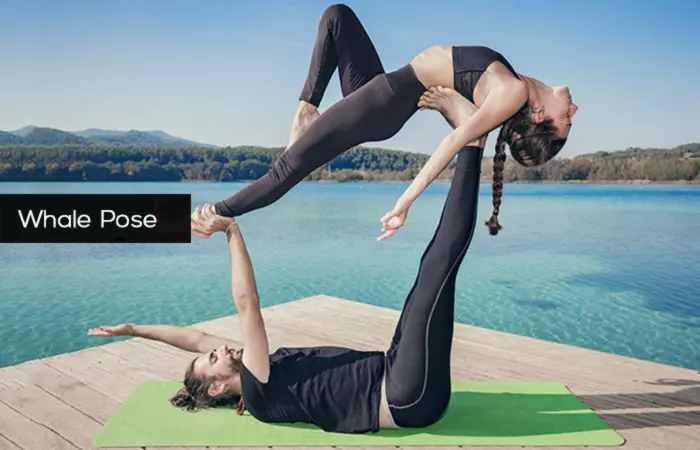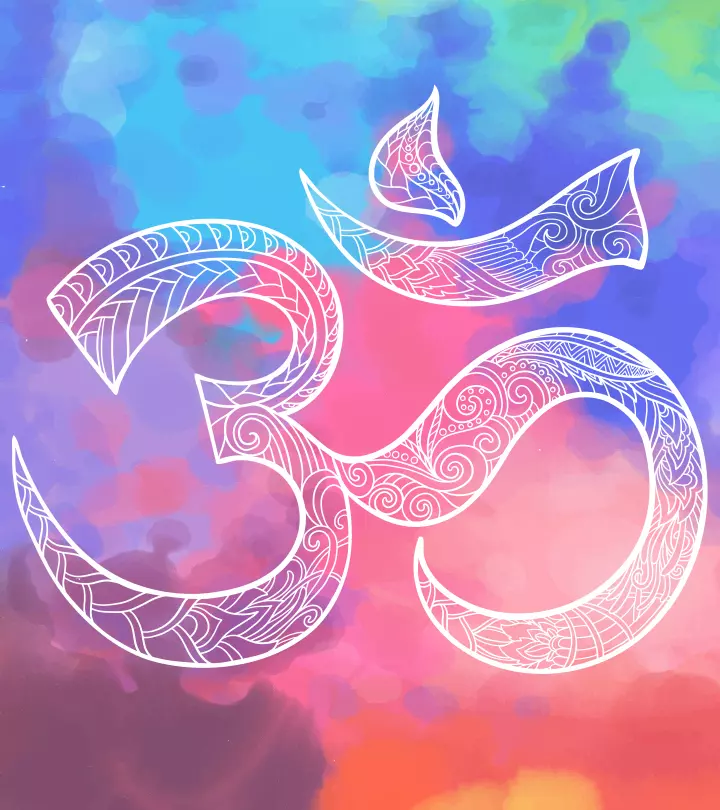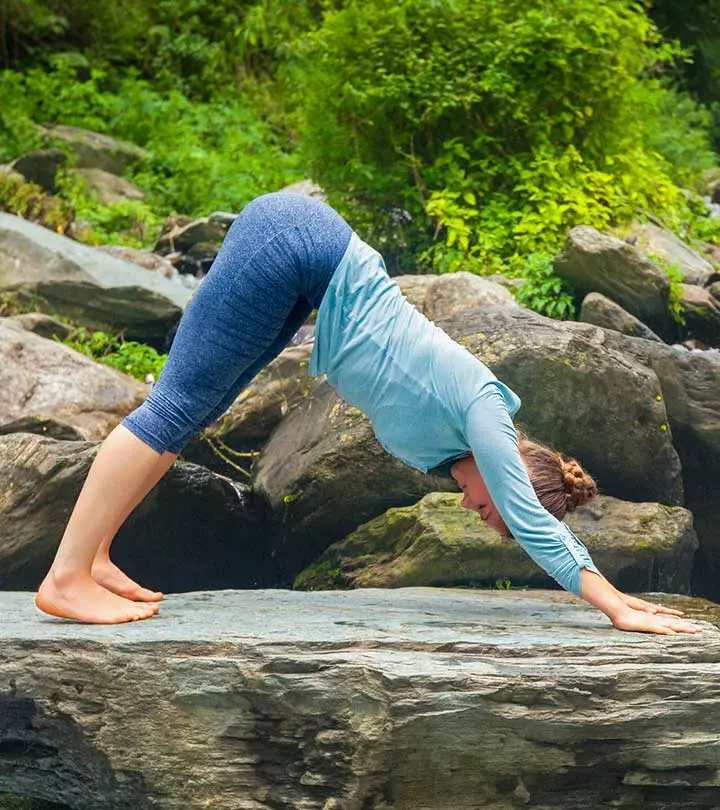6 Effective Acro Yoga Poses For A Healthy Body
A genius collaboration of ancient fitness techniques from the West and the East.

Image: iStock
If you have mastered the art of traditional yoga and want something new, try giving it a touch of acrobaticsi A set of exercises that display strength, balance and agility and involve different activities, such as stunt flying, tailspin, etc. . If you are up for a challenge, you must try doing the most effective acro yoga poses.
Acrobatic or acro yoga is a partner-based exercise. It requires partners to communicate clearly and be mindful of each other’s limits to avoid injuries and make the experience more enjoyable. These yoga poses are ever-evolving, giving you plenty of scope for experiments. Out of the many such fun and thrilling acro yoga poses, we have shortlisted the seven most effective postures for you to get started with.
It is almost impossible to perform these poses if you are new to yoga or acrobatics. So, beginners should first make their foundation strong to get there eventually.
Before we go ahead, let us first understand what acro yoga is all about. Keep reading!
In This Article
What Is Acro Yoga?
Acro Yoga is a partner-based exercise that combines different yoga asanas and acrobatics. In this method, you use gravity and your body weight to strengthen and stretch in poses with complete breath control. Its uniqueness lies in increasing your physical capabilities and coordination by several notches.
The practice involves engaging with another person and building trust with them to support and be supported during a pose. Acro Yoga encourages constant verbal communication, unlike solo practice where we spend time solo.
Acro Yoga is all about working together in a seamless flow and building partnerships. By blending movement, connection, and play, Acro Yoga is highly useful and inspiring.
One of the oldest demonstrations of Acro Yoga is that of Tirumalai Krishnamacharya, a well-known yoga guru, with a child in the late 1930s. It has been evolving ever since.
Acro Yoga involves three significant roles called the base, the flyer, and the spotter. The base usually lies on the ground with the back completely touching the ground. The flyer is the one who lifts off the ground with the base’s support. Then, there is the spotter who observes the base and flyer objectively and makes sure that the flyer lands safely from the elevated position.
Kristin Hansen, a blogger, has been practicing acro yoga since 2013, initially learning through videos and personal experience. She writes, “It is the yoga of trust. It blends the wisdom of yoga, the dynamic power of acrobatics, and the loving kindness of healing arts. These three form the foundation of a practice that cultivates trust, playfulness, and community (i).”
 Trivia
TriviaNow, let’s understand the concept better through the following Acro Yoga poses.
Key Takeaways
- Acro yoga uses body weight and gravity to stretch the muscles and perform different poses.
- The three important roles in acro yoga are the base, the flyer, and the spotter.
- Front bird pose and star pose are a few acro yoga poses you can practice with your partner daily.
- Acro yoga helps build core strength and improve your memory.
Acro Yoga Poses
1. Front Bird Pose

How To Do: The base should lie down on his back. Keep your legs parallel to each other. Bend your knees and place the soles on the ground. The flyer should stand near the base’s feet. The base should lift his feet and place them on the flyer’s hips.
Then, the base should hold the flyer’s arms by her elbows and straighten his legs up in the air, lifting the flyer along. Now, the flyer should balance herself, keeping the toes pointed out. Release the support from the base and raise the arms in a flying position.
2. Star Pose

How To Do: The base should lie down on the floor on his back. The flyer should stand at the head of the base and hold hands with him. Now, the base should lift his legs off the floor, with the soles of the feet facing upwards towards the sky. Then, the flyer should bend forward and place her shoulders on the base’s feet. The flyer should then lift the hips and feet into the air.
3. Throne Pose

How To Do: The base lies on the floor on his back with the knees bent and soles facing upwards towards the sky. Maintain shoulder-width distance between the feet. The flyer stands in front of the base at the feet.
Place the soles of the base on the upper thighs of the flyer and press the length of the foot upwards. The tips of the toes must touch the lower rib cage of the flyer. Now, the base holds the hands of the flyer and straightens his knees, lifting the flyer into the air.
Take the help of a spotter and make the flyer bend her knees and wrap it around the front of the base’s legs. Now, the flyer should lift her torso and let go of the hands of the base. The flyer should now wrap her feet around the calf muscles of the base.
The base’s feet should be placed on the mid thighs of the flyer. The flyer should straighten her back, sit straight and spread the arms out.
4. Back Bird Pose

How To Do: The base should start off in the Dandasana or the Staff Pose position. The flyer should face her back to the back of the base’s legs for the basic inversion. The base should bend his knees so that the buttocks of the flyer settle snugly onto the soles of his feet.
The flyer should stretch her arms backward with the palms facing outwards and reaching out to the base’s hands. The flyer should bend backward, and the base should straighten the legs, lifting the flyer.
The flyer should straighten the left leg and bend the right leg. Also, she should stretch backward in a semi backbend position and let go of the hands with the base so that the flyer can spread the arms out.
5. Whale Pose

How To Do: The base should lie on his back on the ground and raise his legs upwards with the feet facing upwards. The flyer should stand near the shoulder of the base, with the back facing towards the base and feet hip-width apart.
Now, the base should hold the flyer’s ankles and bend her knees towards his chest, making it convenient for the flyer to lean back onto the base’s feet.
The base should place the soles of his feet on the flyer’s shoulder, with the length of the feet running downwards onto the shoulder blades and mid-back.
Now, the base and flyer should work together to lift the flyer by straightening the base’s legs and lifting the flyer up by the ankles by the base’s arms.
The flyer should stretch out her arms and keep her ankles aligned to her hips with the help of the base.
The above poses are a mix of Acro Yoga for beginners and intermediaries. Hope you got an understanding of the Acro Yoga method through these poses.
6. Bow Pose

How To Do: The base should lie on their back, knees bent at a 90-degree angle, and arms extended overhead. The flier should stand near the base’s feet, placing their ankles in the base’s hands. The flier should lean forward while keeping their hands on the base’s knees for support. Both partners should engage their core muscles for balance while the base extends their legs and lifts the flier up.
As the flier leans forward, they need to arch their back, creating a “bow” shape with their chest up and looking backward. The flier should hold their ankles with their hands to make a curved pose. The base should use their legs and core to stabilize the flier. Communicate with your partner to create balance. Hold the pose briefly, then gently release.
 Trivia
TriviaWhen you perform the poses mentioned above, it is important to keep a few things in mind to ensure your safety. Read on to learn about them.
Safety Guidelines
Here are some tips you can follow to ensure complete safety while doing acro yoga:
- Warm up properly for at least 10 minutes to ensure your muscles and joints are prepared for workout.
- Always communicate your limitations and comfort levels clearly to your partner before attempting any pose.
- Ensure you have a spotter to assist you in case of falls or misalignment, especially if you are a beginner.
- Start with simpler poses before progressing to more complex inversions and balancing poses.
- Exercise on cushioned surfaces like padded floors to soften the impact if you fall.
- Listen to your body. If something does not feel right, stop and communicate the same to your partner.
Scroll to the next section to learn how Acro Yoga benefits your health.
Benefits Of Acro Yoga
- Acro Yoga will help you build core strength.
- It will build muscles in your legs, arms, and chest.
- Acro Yoga stretches your body and provides relaxation.
- It makes you aware of your body in space.
- Acro Yoga builds stamina and improves memory.
- It brings harmony to relationships and helps build better emotional connections through playful partner interactions.
- Acro Yoga may help you make quick decisions and overcome the fear of falling.
- It promotes mindfulness, reduces stress, and may teach you to address conflicts head-on.
Variations of yoga are never ending, isn’t it? Mixing and matching the traditional yoga form with new exercises only makes it more fun and brings together the best of both the systems. Acro Yoga is one such form, and its practice is sure to be an enjoyable experience. Get started, and you’ll find out for yourself.
Acro yoga is perfect for those who want to go beyond traditional yoga and try something new. It helps you develop body awareness and encourages building new relationships as it involves exercising with a partner. Moreover, effective acro yoga poses help build core strength, strengthen the muscles in your chest, arms, and legs, build stamina, and enhance memory. However, acro yoga is not meant to be done by beginners as it involves a lot of stretching and balancing. It is advisable to perform it under the guidance of a yoga and meditation coach or join a yoga community to improve your skills. Start with the basic yoga poses and slowly climb up the difficulty level.
Frequently Asked Questions
Is it necessary to bring a partner to an Acro Yoga class?
Not necessarily. There is typically someone available to partner with you.
Am I eligible to try Acro Yoga?
Yes, you are, as long as you are physically active and have no significant health conditions. Acro Yoga involves touching—if you do not like that, then this fitness and wellness practice might not be for you.
Do you have to be flexible to do acro yoga?
No, you can start doing acro yoga even if your body is not flexible. Your muscles will start stretching with practice and improve flexibility.
Is acro the same as tumbling?
No, acro is not the same as tumbling. Acro is the fusion of agility, strength, dance, and athleticism while tumbling concentrates on stamina, strength, and flexibility through repetition of movement.
How is acro yoga different from gymnastics?
Both are physical practices that involve some of the same movements. However, gymnastics is about athletics while acro yoga is more about yoga and acrobatics.
Do you need shoes for acro yoga?
No, you do not need shoes for acro yoga.
Is acro considered dance?
Yes, acro yoga is also considered a type of dance since it combines classical dance techniques with yoga poses.
Learn the basics of AcroYoga to improve strength, balance, and flexibility. Get ready to have fun and explore this novel side to yoga. Check out the video now!
Personal Experience: Source
StyleCraze's articles are interwoven with authentic personal narratives that provide depth and resonance to our content. Below are the sources of the personal accounts referenced in this article.
i. ACRO YOGAhttps://hansenkristin.wordpress.com/acro-yoga/
Read full bio of Nichole Dandrea-Russert
Read full bio of Shirin Mehdi
Read full bio of Arshiya Syeda
Read full bio of Moksha Gandhi


























Community Experiences
Join the conversation and become a part of our empowering community! Share your stories, experiences, and insights to connect with other beauty, lifestyle, and health enthusiasts.